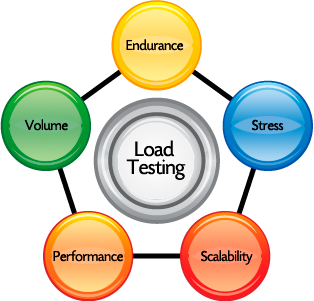Functional Testing:
Testing the application against business requirements. It is a black box type
of testing.Functional testing is done using the functional specifications
provided by the client or by using the design specifications like use cases
provided by the design team.
Functional
Testing covers:
- Unit Testing
- Smoke testing / Sanity testing
- Integration Testing (Top Down,Bottom up Testing)
- Interface & Usability Testing
- System Testing
- Regression Testing
- Pre User Acceptance Testing(Alpha & Beta)
- User Acceptance Testing
- White Box & Black Box Testing
- Globalization & LocalizationTesting
Non-functional
testing - Non-functional
testing is done to ensure that a system/application meets the specified
performance requirements. Here, by performance we do not only mean response
time, but several other factors such as security, scalability and usability of
the application as well.
Non-Functional
Testing covers:
- Load and Performance Testing
- Ergonomics Testing
- Stress & Volume Testing
- Compatibility & Migration Testing
- Data Conversion Testing
- Security / Penetration Testing
- Operational Readiness Testing
- Installation Testing
- Security Testing (ApplicationSecurity, Network Security, System Security)
Performance
Testing: In
order to ensure that the response time of a system is acceptable, performance
testing is carried out. By setting up a considerable load and a
production-sized database, the system is tested for response times of several
business critical processes.
Load Testing: To check whether the system can sustain the pressure or load of many users accessing the system at one time, load testing needs to be carried out. The production load is replicated in the test environment in this case after which the application/system is tested.
Load Testing: To check whether the system can sustain the pressure or load of many users accessing the system at one time, load testing needs to be carried out. The production load is replicated in the test environment in this case after which the application/system is tested.

Stress Testing: This testing is done to pull the system far beyond its capabilities and see how it reacts. Contrary to load testing in which the maximum allowable load is generated, in stress testing, the load generated is more than what the system is expected to handle.
Volume Testing: When storage requirements and capabilities of the system are to be tested, volume testing is done. When a huge database size is encountered, system’s performance and its ability to exchange data and information are tested in this case.
Performance Testing:
In order to ensure that the response time of a system is acceptable,
performance testing is carried out. By setting up a considerable load
and a production-sized database, the system is tested for response times
of several business critical processes.
Load Testing: To check whether the system can sustain the pressure or load of many users accessing the system at one time, load testing needs to be carried out. The production load is replicated in the test environment in this case after which the application/system is tested.
Stress Testing: This testing is done to pull the system far beyond its capabilities and see how it reacts. Contrary to load testing in which the maximum allowable load is generated, in stress testing, the load generated is more than what the system is expected to handle.
Volume Testing: When storage requirements and capabilities of the system are to be tested, volume testing is done. When a huge database size is encountered, system’s performance and its ability to exchange data and information are tested in this case. - See more at: http://blog.testing-whiz.com/2012/02/types-of-non-functional-software-tests.html#sthash.DP3JSxS1.dpuf
Load Testing: To check whether the system can sustain the pressure or load of many users accessing the system at one time, load testing needs to be carried out. The production load is replicated in the test environment in this case after which the application/system is tested.
Stress Testing: This testing is done to pull the system far beyond its capabilities and see how it reacts. Contrary to load testing in which the maximum allowable load is generated, in stress testing, the load generated is more than what the system is expected to handle.
Volume Testing: When storage requirements and capabilities of the system are to be tested, volume testing is done. When a huge database size is encountered, system’s performance and its ability to exchange data and information are tested in this case. - See more at: http://blog.testing-whiz.com/2012/02/types-of-non-functional-software-tests.html#sthash.DP3JSxS1.dpuf
Hello,
ReplyDeleteThe Article on Functional Testing vs Non- Functional Testing is good..It gives detailed information about it. Thanks for Sharing the information about the Comparison of Functional testing and Non Function testing. For More information check the detail on Functional testing check.Software Testing Company